Cáceres
The historic town of Cáceres is known as the "Princesinha do Paraguai", or the Princess of the Paraguay river. It annually hosts Brazil's (and probably the world's) biggest freshwater fishing competition - as well as beautifully restored old buildings. The surrounding district includes two ecological research stations, cave diving, and opportunities for extended fishing trips on Barco-Hotels in the middle of the Pantanal.
History
The town of Cáceres has the disputed title (with Aquidauana) as the second city of the Pantanal. It was founded in 1778 and, through the early part of its history, its economy was based on the extraction of natural products, rubber, cattle and as a commercial river port. Along with other towns such as Cuiabá and Vila Bela da Santíssima Trindade, Cáceres also played a vital role strengthening Portuguese claims to a region on the frontier with the Spanish Empire.
The town was originally settled as part of the gold rush which triggered an influx of Portuguese settlers into region. Unlike Cuiabá, Poconé and Villa Bela - Cáceres never had any significant quantity of gold. But the discovery of ipecacuanha, a plant growing in the region, yielded a product almost as valuable. The plant was sometime referred to as ouro negro da floresta (black gold of the the forest), and was used to make a variety of medicines some of which were still used into the late 20th century. The other significant product was rubber. This didn't actually grow in the Cáceres region, but was produced in the Amazon forests in the north-west of the state (including near Vila Bela). Some of this passed through the port of Cácares on its way to Europe and North America. Rubber was a product which generated enormous wealth in the late 19th and early 20th centuries as the Amazon forests were (then) its only source and it was a commodity on which the industrialising world was highly dependent. Cáceres was also sometimes used as a starting point for explorations into the Brazilian Amazon (such as the famous Roosevelt-Rondon expedition of 1913-14) since this was as far as the steamships travelling up the Paraguay river generally reached.
However, despite its booms, Cácares remained a sleepy backwater for most of its history - somewhere which was always remote backwater and difficult to reach. This changed in the 1950s and 60s as improved roads made transport and communications much quicker and easier. Construction of a bridge over the Paraguay river in 1961 also enabled further expansion.
Things to See and Do
Exploring Local History
Several attractions within the town are as follow:
Catedral de São Luís.
Praça Barão do Rio Branco (Main Square)
Construction of the town's cathedral ran through from 1919 to 1965. This is a picturesque old building which dominates the town's main square (Praça Barão do Rio Branco). There is a local legend that a giant snake (who carved out the region's rivers) now sleeps under the cathedral. Every creak of the building is just said to be the snake changing position.
Marco do Jauru.
Praça Barão do Rio Branco (Main Square)
Located in front of the Cathedral, this is a historical geographical marker originally installed along the Jauru river. It was one of several markers confirming Portugual's claim to the region following the 1750 Treaty of Madrid - marking the frontier between the Portuguese and Spanish Empires. These markers were made in Lisbon, and carved in marble with four faces proclaiming peace and friendship between the two Empires. However, the markers were ordered destroyed when subsequent treaties moved the frontier again. This particular marker was missed due to it being hidden in vegetation. It was rediscovered and moved to Cáceres in 1883.
Museu Histórico
Rua Antônio Maria.
This is one of the best museums in the interior of Mato Grosso. It's located in an old neoclassical style building contracted in 1922. Although small in size, the museum houses several good collections. It has a room dedicated to the Guató Indians who used to populate the area, and are still one of the significant groups in the region. There's a gallery of historic photographs and pantings, and a room illustrating the history and achievements of Marshall Cândido Rondon. The museum is open Mon-Sat from 7am to 6pm. Entry is free.
The local council building is an example of the many old late-19th and early 20th century buildings in the historic town centre of Cáceres. Photo: Lenine Martins/Secom-MT.
Other Old Buildings and Architecture
Cáceres' old architecture is a drawcard for some visitors. Some buildings date from the Portuguese colonial days, although many more date from expansion of the city during the Rubber Boom period of the late 19th and early 20th centuries. Many of these have been restored to their former glory and brightly painted. Some interesting examples can be seen along the Rua Coronel José Dulce.
International Festival of Fishing
Teams on the water, participating in the Festival Internacional de Pesca. Photo: Marcos Negrini/Setecs-MT.
Crowd at a show of popular band, Calcinha Preta. Part of the entertainment at the 2010 Festival Internacional de Pesca. Photo: Edson Rodrigues/Secom-MT.
The Festival Internacional de Pesca (FIP) is the billed as the world biggest freshwater fishing competition (gaining the Guinness Book of Records title in 1992). The competition runs for a week each year - with around 30,000 people participating each day. There are big prizes, including cars, to the teams gaining the most points - and is a major event attracting fishermen from across Brazil and neighbouring countries. With so many people converging on Cáceres there are also lots of other attractions including shows by popular music artists, beach volleyball, football, canoe and kayak races and more.
This is now the biggest annual tourist event within the state of Mato Grosso and provides a major boost for the local economy - typically occurring in May or June. The event has been running since 1980. There are several categories including men's, women's, and children's divisions, and boat/canoe fishing categories. From 1995, the competition's emphasis was changed to catch and release fishing - where participants are required to keep the fish alive until they're measured, and points are lost for each dead fish. Points are also awarded based on the type of fish - with prized species such as dorado and pacu being the most valuable.
Coocrijapan
Pen at the Coocrijapan jacaré breeding facility in Cáceres. Photo: Edson Rodrigues/Secom-MT.
Cooperativa de Criadores de Jacaré do Pantanal (Coocrijapan) is a cooperative of Jacaré breeders situated in Cáceres' industrial district. It was created in 1991 as a means to combat illegal jacaré hunting - providing a legal alternative which reduces poaching pressure on the region's wild jacaré population. Jacaré are collected from local breeders, and raised in captivity until reaching around two years. They are slaughtered humanely and processed hygienically to produce leather and meat. This meat is a local delicacy, and which also gets exported to Asia. The complex includes 11 temperature and humidity-controlled sheds, with the potential to produce around 100,000 jacaré's each year. Processing uses 100% of the jacaré, and is a sustainable alternative compared to the poaching of the past which would typically take only the skin and leave the rest of the jacaré to rot. Visitors can tour the facility - although these need to be arranged in advance.
Chacará de Daveron and Daveron Beach
This is a small farm and popular beach close to the town - and is also the site of the regional environment and tourism office (SEMATUR). The farm was formerly owned by North American pathologist, Alexander Daveron - being established to develop research and tourism in the area.
Catedral de São Luís located in Praça Barão do Rio Branco in the town centre. Credit: Guilherme Filho/Secom/MT.
Taiamã Ecological Station
Unlike National Parks, Ecological Stations are generally for research only and not open to the public. As such, the Taiamã reserve can't be entered - but because it's located on an island in the Paraguay river, visitors can travel by boat around the island and see the animals which come down to the river to drink. This actually makes it one of the best places to see jaguars - as the island has a large number of them. Travelling by boat you can get quite close. The best time to see them is from mid-June to mid-November.
The ecological station was created in 1981, with an additional area of 11,200 hectares - increasing to 16,000 hectares with the inclusion of the neighbouring Sararé island in 1983. The name Taiamã is a local name for the skimmer - a bird which fishes by skimming the surface of the water with its beak as it flies low over the river. About 90% of the reserve is covered by marshland and small ponds. These are ideal habitat for jacaré, capybara, marsh deer, and wading birds such as herons and tuiuiú. There are also monkeys in small stands of forest on the island.
The island can be reached by five hour boat journey from Cacares. Alternatively, it is a 90km drive to Fazenda Baiazinha followed by a one hour boat journey.
Serra das Araras Ecological Station
This is a group of three reserve areas located north of Cáceres, with a total area of 28,700ha. Since it's north of the Pantanal, the landscape is cerrado - with about 50% grasslands, 40% forest, and the remainder as swamp or marshland. As with Taiamã, the Ecological Station isn't generally open to the public - instead having its core focus instead on preservation and research. It's recognised for biodiversity - with more than 340 bird species records including hyacinth macaws, seriema, and the extremely rare blue-eyed ground dove. Other fauna include jacaré, capybara, armadillo, collared peccary, bush dogs, and jaguar.
Cachoeira das Piraputangas
Although its not the biggest waterfall in the region, the Cachoeira das Piraputangas remains popular as a swimming hole. The falls themselves on only 2m high but provide a natural swimming hole set in a beautiful location. The waterfall is located 12km from Cáceres travelling along MT-343 which connects Cáceres to neighbouring Barra do Bugres.
There are several other waterfalls in the region, although they're located on private land - meaning that permission is needed to visit. This can usually be arranged by local tour agents. The waterfalls include:
- Cachoeira da Cabeceira do rio Quilombo. This is an 80m high waterfall located 30km from Cáceres. The best time to see this is in the wet season when the water volume reaches its maximum.
- Cachoeiras do córrego Cachoeirinha. These are two small of 15m, and another of 35m - picturesquely located one above the other. There is also a natural swimming hole.
- Cachoeira da Fazenda Primavera. This waterfall is located at the entrance of Fazenda Primavera, 25km southwest of Cáceres on the old road to Cuiabá. This is also another popular natural swimming hole.
Dolina is geological term referring to a sinkhole. This particular sinkhole is located about 22km from Cáceres (10km by road, with a further 12km along farm roads). The region is dotted by limestone rock formations. The dolina is a small circular lake, and approximately 180m deep - surrounded by walls on all sides. During the dry season the waters turn bright blue, shifting to green in the wet season. They're said to have strong medicinal properties, hence the name Água Milagrosa or Miracle Water.
Fazenda Facão
This is a farm located 15km southwest of Cáceres on BR-070 travelling towards Cuiabá. It was originally a plantation producing sugar and alcohol. The old farmhouse, buildings and machinery provide a sense of history - while the natural beauty of the region including caves, a waterfall, a swimming hole, forest, and archaeological sites offer further potential for visitors. There have been plans to restore the fazenda and create a visitors' centre, but the work hasn't yet occurred and the site currently remains abandoned.
Hotel/Pousada Baiazinha
Although primarily offering fishing tours, Baiazinha is located close to the Taiamã ecological station and can offer trips or boats for hire to explore along the rivers. Transfers to/from Cáceres are also available.
Fazenda Barranco Vermelho
This is another historic farm, located around 70km from Cáceres. It can be reached by travelling to Fazenda Facão, then a further 60km along an unpaved track. Alternatively it can be reached by a three hour boat ride. The farm is an old sugar plantation but also covers archaeological sites including an indigenous burial ground. The current owners are developing the area for tourism - opening a guesthouse for fishing and wildlife sightseeing.
Fazenda Pousada Descalvados
This historic fazenda is considered one of the most "postcard" scenes of the region - and does, in fact, appear on postcards. It's located about 160km from Cáceres, close to the Taiamã Ecological station. It can be reached by a four-hour boat journey from Cáceres - or by 90km drive to Fazenda Baiazinha with a further 40min by boat.
The fazenda was established by a Belgian industrialist who imported his own industrial equipment from the city of Liège, bringing it upriver by steamship. The farm produced beef which was canned then exported to Europe and the US. It was later sold to an American company and operated as the Brazil Land & Packing company. It was a stop visited by US President Theodore Roosevelt when travelling into Amazônia on his famous journey to explore the "River of Doubt". Today, the old industrial plant is partially demolished and no longer running. The fazenda is owned by a local family from Cáceres. The complex which consists of a large farmhouse, a post office, a school, and a church have been transformed into a wildlife lodge. The site and its iconic architecture have been recognised by the state of Mato Grosso for their historic significance.
Fazenda Jacobina
This was one of the first fazendas in the territory, and was founded during the Portuguese colonial period in 1769. It was during this time (and during the later days of the Brazilian Empire) when Mato Grosso's remoteness resulted in it becoming a place of exile for revolutionaries and the politically troublesome. Fazenda Jacobina gained fame as the place of death Dr. Francisco Sabino Vieira in 1846. Sabino led a revolution declaring the Bahian Rebellion (also know as the Sabinada) declaring a free republic of Bahia in 1837-8. He was exiled to Vila Bela da Santíssima Trindade but contracted malaria and died enroute at the fazenda.
The fazenda, itself, is an imposing colonial style structure constructed using rammed earth, one of the traditional techniques of the day. The plantation used indian and African slave labour to produce sugar and rum. For many years it was the richest farm in the province with around 600 cattle, 200 slaves, and an equal number of freedmen. It reputedly also hosted the french author, Langsdorff Expedition member (and an early inventor of photography) Hercules Florence in 1827. Today the fazenda is owned by the Lara family, and is one of the greatest historic attractions in Cáceres.
Getting There
By Car: Head west out of Cuiabá on BR-070.The distance from Cuiabá to Cáceres is 215km, taking around three hours. From Cáceres you can continue along BR-070 to San Matías in Bolivia, or along BR-174 to Pontes e Lacerda (then Vila Bela on MT-246), or further up towards Rondonia.
By Bus: Most visitors travelling to Cáceres will get there via Cuiabá. There are frequent buses between the two cities - every two hours or so. The journey takes around four hours. Buses will generally stop at the main rodoviária on the outskirts of the town, but some then continue onwards to the old bus station (rodoviária velha) closer to the town centre. It pays to check this when you buy your ticket.
From the old bus station you can also catch buses travelling to Pontes e Lacerda, Vila Bela, and to Corixa on the Bolivian border with San Matías. Note: If leaving for Brazil it may be advisable to get your passport stamped at the Federal Police office in Cáceres (Avenida Getúlio Vargas, 2125) before you leave.
Barco-Hotels
Barco-Hotels are a popular way for Brazilians to experience the Pantanal - travelling the region's rivers, watching wildlife and fishing … sometimes taking all the comforts of home. Much of this fishing fleet is based in Cáceres.
Other Travel Info
The site below has many useful travel and accommodation references for visitors Cáceres.



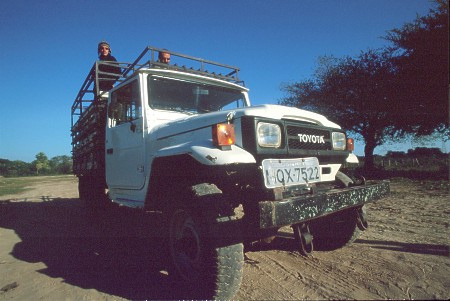
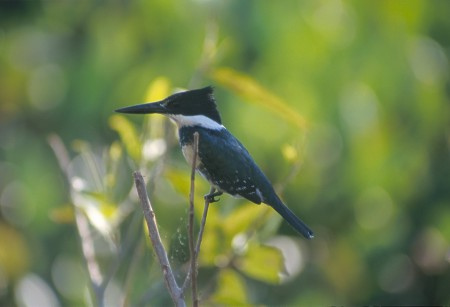
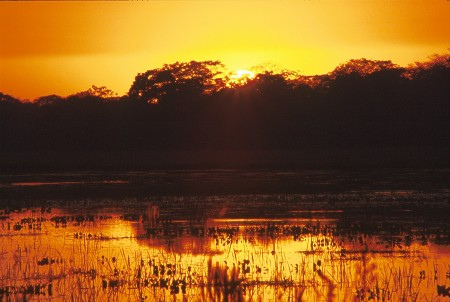


Banner image: Festival Internacional de Pesca de Cáceres (Marcos Bergamasco/Secom-MT).
Footer images: Andrew Mercer
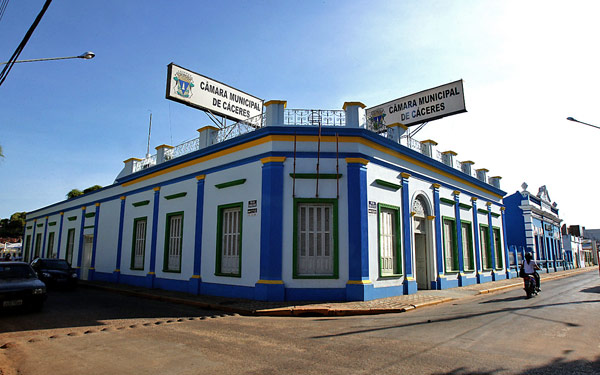
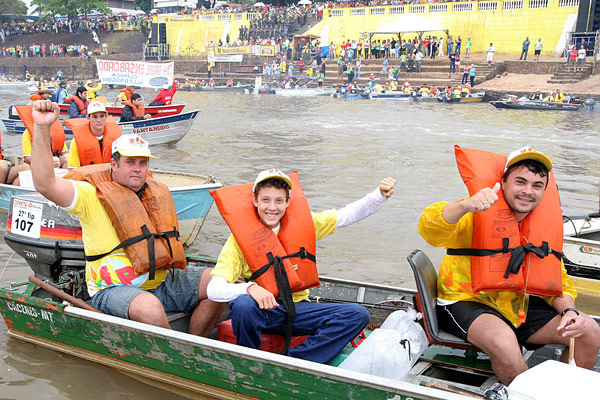

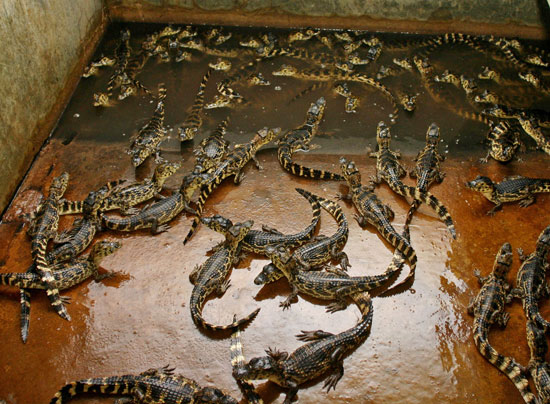
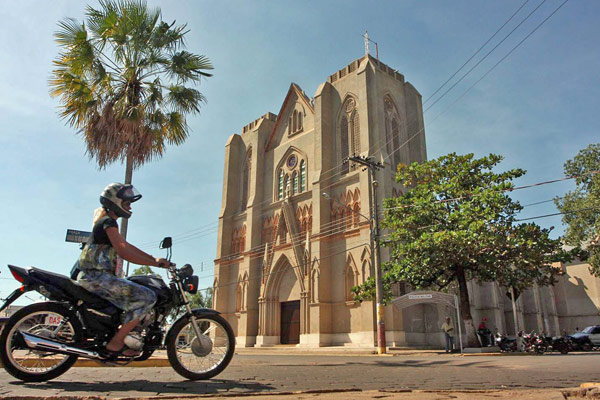
Pantanal Escapes